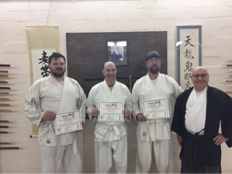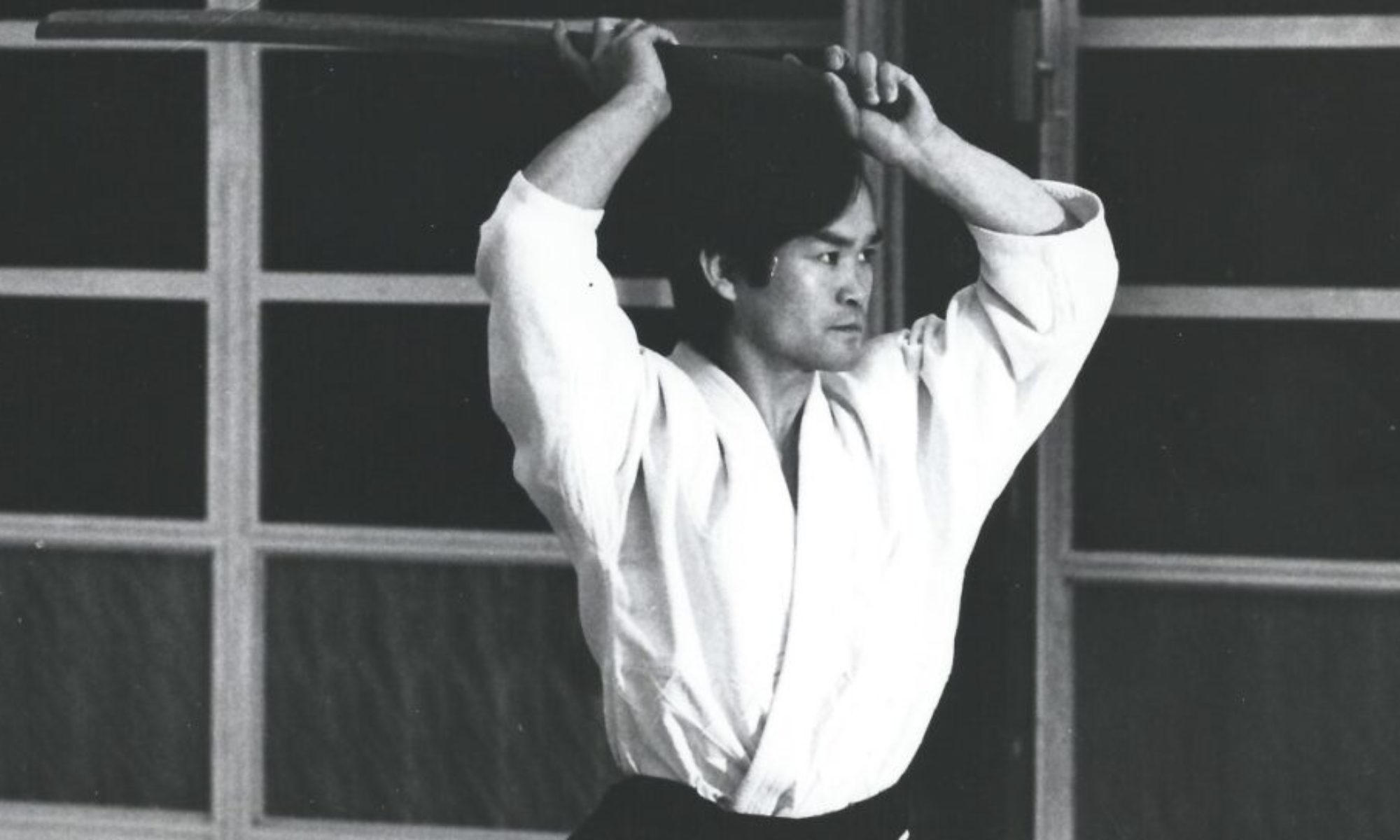By Cecilia Ramos, Grass Valley Aikikai
 Every year at Summer Camp we have a fabulous raffle to raise money for Birankai North America’s Scholarship Program. Prizes range from small to large. Many are handmade by our members and the grand prize is Summer Camp for the following year. I would like to encourage everyone to buy raffle tickets and donate prizes.
Every year at Summer Camp we have a fabulous raffle to raise money for Birankai North America’s Scholarship Program. Prizes range from small to large. Many are handmade by our members and the grand prize is Summer Camp for the following year. I would like to encourage everyone to buy raffle tickets and donate prizes.
A few years back I won a set of three porcelain “whiskey” cups. They were lovely, but I couldn’t figure out why they were called whiskey cups. I packed them carefully to survive traveling home in my suitcase and was relieved that they arrived undamaged. Putting them on the shelf I noticed they weren’t straight and looked again for damage. That was when I realized they had been made crooked on purpose, like they were drunk! Hence the name! Whiskey Cups! I treasure them and love their crookedness.
Last year Neal Dunnigan Sensei, chief instructor of Wheatbelt Aikikai, won a piece of calligraphy brushed by Chiba Sensei. It was donated by Lizzy Lynn Sensei, who herself had won it as a raffle prize years before at a camp in San Diego. She rolled it into a tube to get it back to her dojo in Northern California, and then had it framed. It was quite large, perhaps five feet tall, but narrow. When she decided to donate it back, the size became a problem, as it seemed a pity to take it out of the frame. The solution was to ask Carole Gifford to drive it three hours to Grass Valley, as she was coming to our Mountain Weapons Seminar. Then my student Iris Vandevorst’s family drove it up to Seattle. In between the seminar and camp, the beautiful calligraphy leaned against the back wall in my dojo and I could see it whenever I was teaching. In the month it lived with me I grew very fond of it, yet I hoped I would NOT win it, because I couldn’t bear to have to transport it back again. It turns out that Dunnigan Sensei was also apprehensive about winning as he was due to leave early the next day to start a month long trip to Ireland. However, when he won it, with great martial spirit, he decisively cut through the problem with an application of dollars, and arranged for shipping to Oklahoma. Leslie Cohen and Ea Murphy Sensei assumed custody and handled the details, for which Dunnigan Sensei wishes them credited as he was most grateful. So now Chiba Sensei’s well traveled calligraphy has a new home at Wheatbelt Aikikai.
While the calligraphy was in my possession I wondered what it meant, and in fact wondered why a translation wasn’t given with it. I phoned up Lynn Sensei to ask, and got a brusque “I don’t know”. For those of you who don’t know Lynn Sensei, she can get a tone that makes one feel it would be best to go no further, and so I let go of my curiosity. Much later I learned that the characters were very difficult to translate. At camp I noticed a group of Japanese speakers clustered around it, debating about the translation. Dunnigan Sensei got it with the translation: Heaven-Dragon-Demon-Fire-Hiding-in-Lotus. When Lynn Sensei found out, she had a good laugh. I love her laugh.
Later Darrell Bluhm Sensei provided more information. He wrote, “This is the opening of a poem or sutra. It was translated in a collection of writings Chiba Sensei handed out in the early years of San Diego Aikikai… the 3rd and 4th kanji are Sensei’s Zen name ‘Devil Eyes’… It reads:
Heavenly dragon
with devil eyes
lotus flower in fire”
Bluhm Sensei went on to give the remainder of the sutra:
“Let today be
the dawn
of the relationship
Is there anyone
who asks
what it means
Nothing
the ceaseless great wind
blows high in the sky”
Dunnigan Sensei also was interested in uncovering the meaning behind the kanji. Just knowing the literal translation didn’t seem enough. He was kind enough to share with me the following story:
“To get some additional help, I reached out to an old Japanese friend, a Kyokushin Karate shihan from Osaka. Fujiwara Sensei called me up and laughed. He said that he and his wife had spent hours looking up the phrase, “Heaven-Dragon-Demon-Fire-Hiding-In-Lotus to see where else it might appear. He suggested that it would be difficult for the average American to understand. The characters need to be interpreted symbolically according to Japanese cultural context, not translated literally.
The first character represents an aspirational construct of “heaven” (not necessarily as represented in Christian art) or “the ultimate/highest level”. In Asian mythology, the dragon is considered a heavenly creature and is thought of as virtuous. Demons (omi) in Japanese mythology are not like the Christian demons (i.e. fallen angels assisting Satan). Rather, in Japan, they are considered to be the transformed tortured souls who prey upon humans, either out of avarice or revenge. So the first three characters set up a loose paradigm of nobility juxtaposed against the disreputable.
The next four characters are more of an actual phrase. They are a reminder of the characteristics of the lotus. The lotus starts off in the bottom of a pond where it is buried in muddy decaying dead matter (like the ghoulish realm of Japanese demons). Yet, eventually, the beautiful white flower opens on the surface of the water. It’s brightness/fire is inherent to its character, but not visible to us until the plant has gone through the process of purification by ingesting and metabolizing the nutrients among the putrid material at its roots. So the last four characters reflect the paradigm presented by the first three characters and also introduce the lotus metaphor as an object lesson on accomplishing such a metamorphosis. 
Then just this morning I was having breakfast with a developmentally disabled friend. I told him the story and asked him how he would describe the calligraphy. He immediately said, ‘It is about continually transforming yourself and becoming progressively better’… I think I will simply go with that explanation.”
As Aikido practitioners do we not strive to continually transform ourselves and become progressively better? And isn’t going to Summer Camp a good way to do that? So, the moral of the story is, buy raffle tickets!
* * * * * * * * * * * * * * *
Tickets may be purchased at the Camp Store during camp, or before camp with pre-purchase by filling out and sending in this form.
